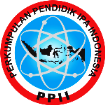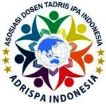Persepsi Mahasiswa terhadap Penggunaan Virtual Laboratory dalam Pembelajaran Biologi Molekuler
Abstract
Virtual laboratory berkembang pesat penggunaannya dalam pembelajaran sains karena terbukti memberikan manfaat yang signifikan terhadap proses dan hasil belajar sains. Keterbatasan fasilitas laboratorium dalam pembelajaran Biologi Molekuler pada Program Studi Pendidikan Biologi di salah satu LPTK di Kota Pekanbaru telah mendorong pengembangan aplikasi PCR virtual dan penggunaannya dalam pembelajaran Biologi Molekuler berstrategi modified free inquiry pada topik Polymerase chain reaction (PCR). Tujuan penelitian ini untuk meninjau persepsi mahasiswa terhadap penggunaan aplikasi PCR virtual serta mendeskripsikan dan membandingkan persepsi tersebut dengan hasil-hasil penelitian sebelumnya yang relevan. Ada lima aspek persepsi yang disurvei yaitu inovasi, motivasi, efektivitas, manfaat, dan penyajian prosedur praktikum. Hasil analisis data menunjukkan bahwa persentase persepsi positif paling besar adalah pada aspek inovasi dan penyajian prosedur praktikum (98%), diikuti oleh aspek motivasi (96%), aspek manfaat (88%), dan aspek efektivitas (86%). Berdasarkan hasil analisis data dapat disimpulkan bahwa secara rerata sebagian besar mahasiswa (93%) mempunyai persepsi positif terhadap penggunaan PCR virtual dalam pembelajaran Biologi Molekuler dan sebagian kecil (7%) yang memiliki persepsi negatif.
Full Text:
PDFReferences
Abramov, V., Kugurakova, V., Rizvanov, A., Abramskiy, M., Manakhov, N., Evstafiev, M., & Ivanov, D. (2016). Virtual biotechnological lab development. BioNanoScience, 7(2), 363–365. doi: https://doi.org/10.1007/s12668-016-0368-9
Alneyadi, S. S. 2019. Virtual lab implementation in science literacy: Emirati science teachers’ perspectives. EURASIA Journal of Mathematics, Science and Technology Education, 2019, 15(12), em1786. doi: https://doi.org/10.29333/ejmste/109285
Avila, R. E., Samar, M. E., Sugand, K., Metcalfe, D., Evans, J., & Abrahams, P. H. (2013). The first South American free online virtual morphology laboratory: Creating history. Creative Education, 4(10A), 6-17. doi: https://doi.org/10.4236/ce.2013.410A002
Bakar, N., Zaman, H. B., Kamalrudin, M., Jusoff, K., & Khamis, N. (2013). An effective virtual laboratory approach for chemistry. Australian Journal of Basic and Applied Sciences, 7(3), 78-84. Retrieved from https://pdfs.semanticscholar.org/ee30/c1d6bdb8f97d0ea722015e8688fa9789d249.pdf
Bercot, F. F., Augusto, A., -Neto, F., Lopes, R. M., Faggioni, T., & Alves, L. A. (2013). Virtual immunology: Software for teaching basic immunology. The International Union of Biochemistry and Molecular Biology, 41(6), 377-383. doi: https://doi.org/10.1002/bmb.20733
Bingimlas, K. A. (2009). Barriers to the successful integration of ICT in teaching and learning environments: A review of the literature. Eurasia Journal of Mathematics, Science & Technology Education, 5(3), 235-245. doi: https://doi.org/10.12973/ejmste/76803
Bonser, S. P., de Permentier, P., Green, J., Velan, G. M., Adam, P., & Kumar, R. K. (2013). Engaging students by emphasising botanical concepts over techniques: Innovative practical exercise using virtual microscopy. Journal of Biological Education, 47(2), 123-127. doi: https://doi.org/10.1080/00219266.2013.764344
Booth, C., Cheluvappa, R., Bellinson, Z., Maguire, D., Zimitat, C., Abraham, J., & Eri, R. (2016). Empirical evaluation of a virtual laboratory approach to teach lactate dehydrogenase enzyme kinetics. Annals of Medicine and Surgery, 8, 6-13. doi: 10.1016/j.amsu.2016.04.019
Diwakar, S., Nair, B. G., & Nedungadi, P. (2011). Enhanced facilitation of biotechnology education in developing nations via virtual labs: Analysis, implementation and case-studies. International Journal of Computer Theory and Engineering, 3(1), 1793-8201. Retrieved from https://www.amrita.edu/system/files/publications/enhanced-facilitation-of-biotechnology-education-in-developing-nations-via-virtual-labs-analysis-implementation%20-and-case-studies.pdf
Dyrberg, N. R., Treusch, A. H., & Wiegand, C. (2016). Virtual laboratories in science education: Students’ motivation and experiences in two tertiary biology courses. Journal of Biological Education, doi: http://dx.doi.org/10.1080/00219266.2016.1257498
Gunawan, Sahidu, H., Harjono, A., & Suranti, N. M. Y. (2017). The effect of project-based learning with virtual media assistance on student’s creativity in physics. Cakrawala Pendidikan, XXXVI(2), 167-179. doi: 10.21831/cp.v36i2.13514. https://journal.uny.ac.id/index.php/cp/article/view/13514
Havlíčková, V., Šorgo, A., & Bílek, M. (2018). Can virtual dissection replace traditional hands-on dissection in school biology laboratory work? EURASIA Journal of Mathematics, Science and Technology Education, 14(4), 1415-1429. doi: https://doi.org/10.29333/ejmste/83679
Herga, N. R., Čagran, B., & Dinevski, D. (2016). Virtual laboratory in the role of dynamic visualisation for better understanding of chemistry in primary school. Eurasia Journal of Mathematics, Science & Technology Education, 12(3), 593-608. doi: https://doi.org/10.12973/eurasia.2016.1224a
Juwariyah, S., Koes H. S., & Latifah, E. (2017). Guided inquiry method employing virtual laboratory to improve scientific working skills. Jurnal Pendidikan Sains, 5(1), 17–25. Retrieved from https://pdfs.semanticscholar.org/15a0/c0d9968fd1d81273b7cc156d15fc20b963a9.pdf
Kumar, D., Radhamani, R., Nizar, N., Achuthan, K., Nair, B., & Diwakar, S. (2018). Virtual and remote laboratories augment self learning and interactions: Development, deployment and assessments with direct and online feedback. doi: https://doi.org/10.7287/peerj.preprints.26715v1
Maldarelli, G. A., Hartmann, E. M., Cummings, P. J., Horner, R. D., Obom, K. M., Shingles, R., & Pearlman. 2009. Virtual lab demonstrations improve students’ mastery of basic biology laboratory techniques. Journal of Microbiology & Biology Education, 10, 51-57
Munawar, S., Toor, S. K., Aslam, M., & Hamid, M. (2018). Move to smart learning environment: Exploratory research of challenges in computer laboratory and design intelligent virtual laboratory for e-learning technology. EURASIA Journal of Mathematics, Science and Technology Education, 14(5), 1645-1662. doi: https://doi.org/10.29333/ejmste/85036
Nair, B., Krishnan, R., Nizar, N., Radhamani, R., Rajan, K., Yoosef, A., Sujatha, G., Radhamony, V., Achuthan, K., & Diwakar, S. (2012). Role of ICT-enabled visualization-oriented virtual laboratories in universities for enhancing biotechnology education - VALUE initiative: Case study and impact. FORMAMENTE, VII(1-2), 209-226. Retrieved from https://formamente.guideassociation.org/wp-content/uploads/2012_1_2_Nair_et_al.pdf
Oktaviani, E. I., Kadaritna, N., & Rosilawati, I. 2016. Pengembangan virtual lab untuk praktikum penurunan titik beku dan tekanan osmotik larutan. Jurnal Pendidikan dan Pembelajaran Kimia, 5(2), 203-214
Polly, P., Marcus, N., Maguire, D., Belinson, Z., & Velan, G. M. (2014). Evaluation of an adaptive virtual laboratory environment using western blotting for diagnosis of disease. BMC Medical Education, 14, 222. doi: https://doi.org/10.1186/1472-6920-14-222
Potkonjak, V., Gardner, M., Callaghan, V., Mattila, P., Guetl, C., Petrovic, V. M., & Jovanovich, K. (2016). Virtual laboratories for education in science, technology, and engineering: A review. Computers and Education, 95, 309–327. doi: https://doi.org/10.1016/j.compedu.2016.02.002
Raineri, D. (2001). Virtual laboratories enhance traditional undergraduate biology laboratories. Biochemistry and Molecular Biology Education, 29(4), 160–162. doi: https://doi.org/10.1111/j.1539-3429.2001.tb00107.x
Schnotz, W., & Lowe, R. (2003). External and internal representation in multimedia learning. Learning and Instruction, 13, 117–123. doi: https://doi.org/10.1016/S0959-4752(02)00015-4
Shegog, R., Lazarus, M. M., Murray, N. G., Diamond, P. M., Sessions, N., & Zsigmond, E. (2012). Virtual transgenic: Using a molecular biology simulation to impact student academic achievement and attitudes. Res. Sci. Educ., 42, 875-890. doi: https://doi.org/10.1007/s11165-011-9216-7
Smetana, L. K., & Bell, R. L. (2012). Computer simulations to support science instruction and learning: A critical review of the literature. International Journal of Science Education, 34, 1337–1370. doi: https://doi.org/10.1080/09500693.2011.605182
Špernjak, A., & Šorgo, A. (2017). Differences in acquired knowledge and attitudes achieved with traditional, computer-supported and virtual laboratory biology laboratory exercises. Journal of Biological Education. doi: https://doi.org/10.1080/00219266.2017.1298532
Špernjak, A., & Šorgo, A. (2009) Perspectives on the introduction of computer-supported real laboratory exercises into biology teaching in secondary schools: Teachers as part of the problem. In: Lamanauskas V., editor. Challenges of Science, Mathematics, and Technology Teacher Education in Slovenia (Problems of Education in the 21st Century, vol. 14) Siauliai: Scientific Methodological Center Scientia Educologica, 135–143
Toth, E. E., Ludvico, L. R., & Morrow, B. L. (2014). Blended inquiry with hands-on and virtual laboratories: The role of perceptual features during knowledge construction. Interactive Learning Environments, 22(5), 614-630. doi: https://doi.org/10.1080/10494820.2012.693102
Triola, M. M., & Holloway, W. J. (2011). Enhanced virtual microscope for collaborative education. BMC Medical Education, 11, 4. doi: https://doi.org/ 10.1186/1472-6920-11-4
Yuniarti, A., Yeni, L. F., & Yokhebed. (2017). Development of virtual laboratory based on interactive multimedia on planting and painting bacteria. J. Phys.: Conf. Ser., 895, 012120. https://doi.org/10.1088/1742-6596/895/1/012120
DOI: http://dx.doi.org/10.24014/jnsi.v2i2.7884
Refbacks
- There are currently no refbacks.

Journal of Natural Science and Integration
E-ISSN: 2620-5092 P-ISSN: 2620-4967
Published By:
Department of Science Education, Faculty of Education and Teacher Training,
State Islamic University of Sultan Syarif Kasim Riau, Indonesia
Mailing Address:
Jl. H.R Soebrantas Km. 15 No. 155
Kelurahan Simpang Baru
Kecamatan Tuah Madani, Pekanbaru, Riau, Indonesia
Email: jnsi.tadrisipa@uin-suska.ac.id
Indexed By:
Journal of Natural Science and Integration is licensed under a Creative Commons Attribution 4.0 International License.


_-_Copyy2.png)






.jpg)
.png)
.jpg)
.jpg)




